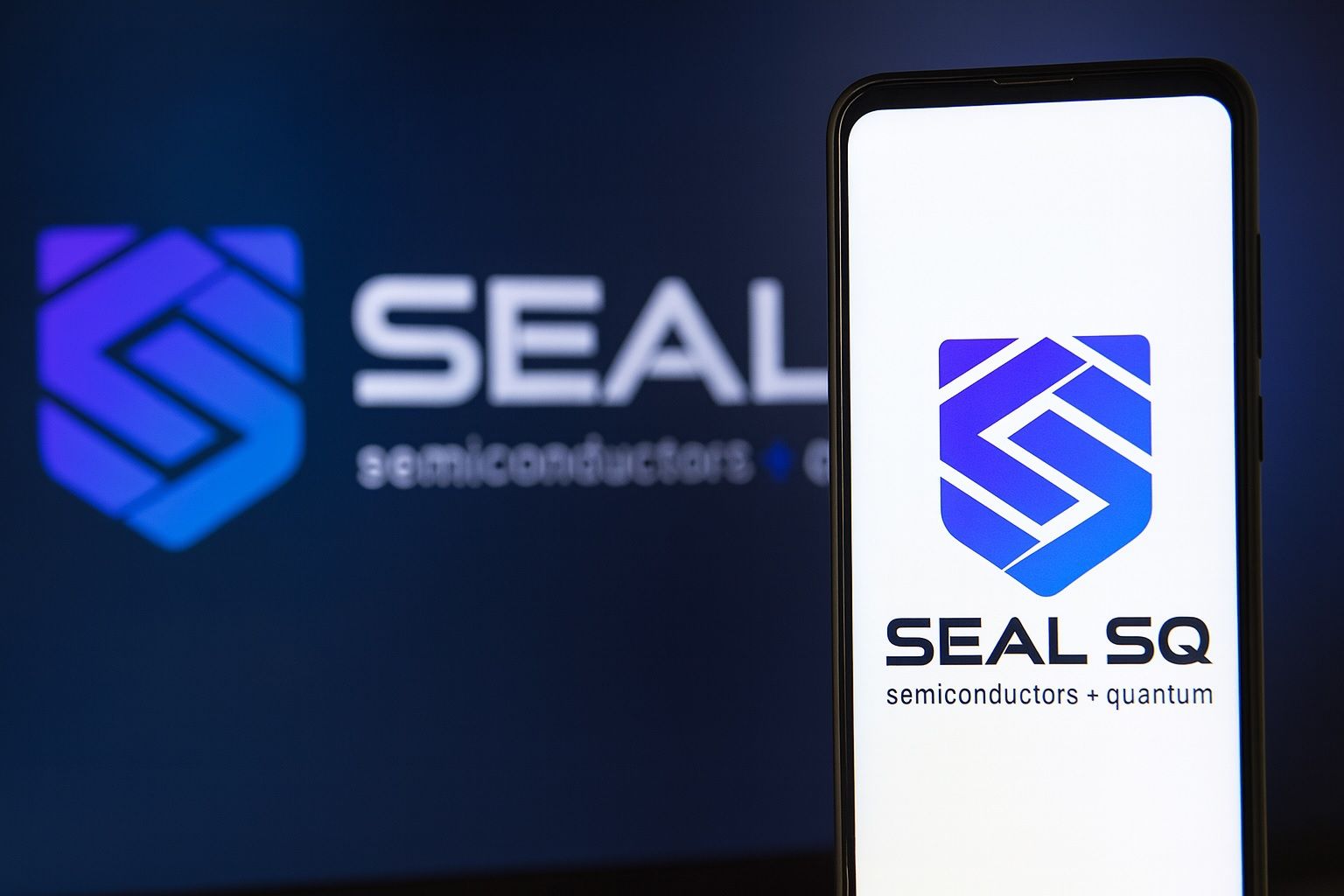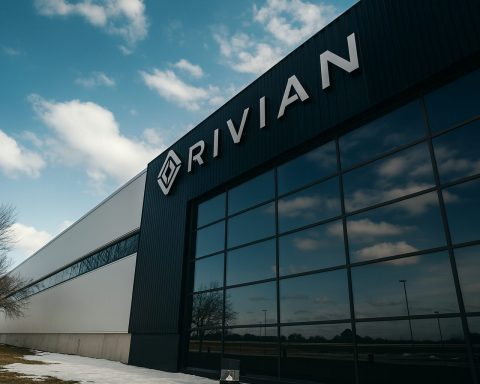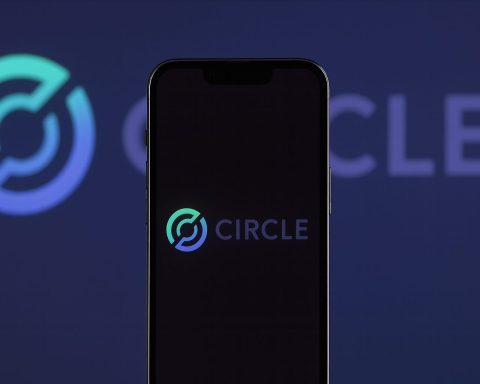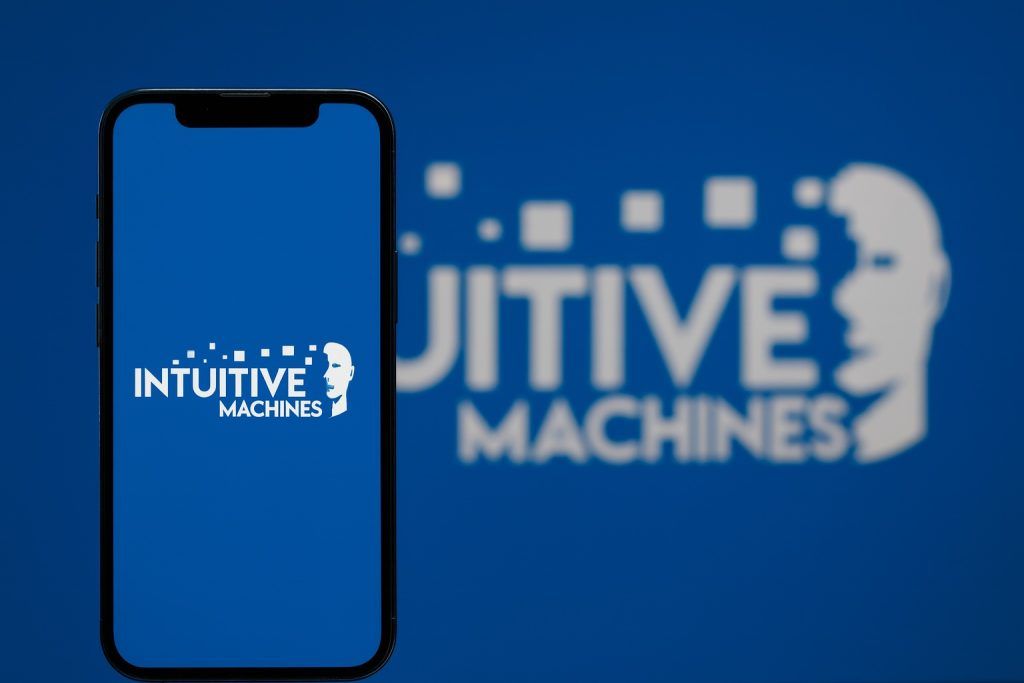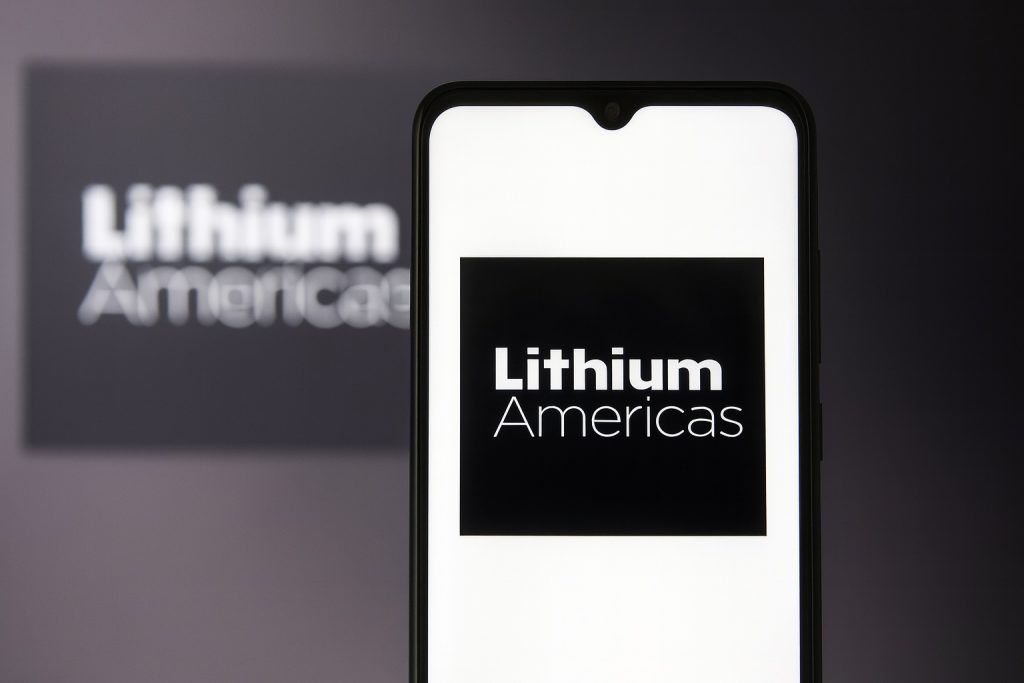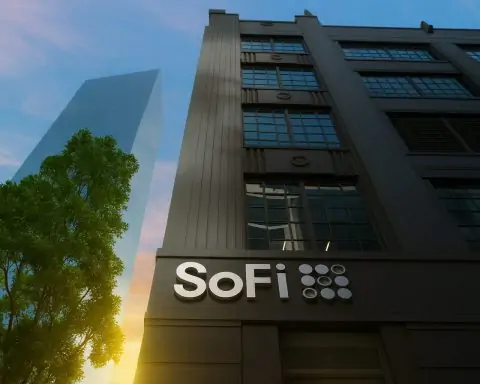- Steep Stock Surge: SEALSQ Corp (NASDAQ: LAES) jumped about 9–10% on Oct. 14, 2025, to roughly $6.70 per share [1] – continuing a blistering rally (over +50% in a week, more than doubling since September) amid a blitz of post-quantum security deals [2].
- Flurry of New Partnerships: In the span of days, SEALSQ announced alliances spanning finance, energy, and defense. It’s teaming with Switzerland’s Wecan Group on a quantum-proof KYC (Know-Your-Customer) solution [3], expanding a Landis+Gyr pact to secure North America’s smart energy grid [4], and co-developing “Made in USA” secure chips for the U.S. defense market with Trusted Semiconductor Solutions [5].
- Rapid Growth & Funding:9M 2025 sales hit $9.9 M (up 41% YoY) [6]. Q3 alone outpaced the entire H1, prompting management to reaffirm 2025 revenue guidance of $17.5–$20 M (a ~60–80% jump vs. 2024) [7]. To fuel its ambitions, SEALSQ raised $69 M this month via warrant exercises, boosting its cash reserves to about $220 M [8].
- Cutting-Edge Launches: SEALSQ is poised to debut the Quantum Shield QS7001 chip in November – one of the first with NIST-approved quantum-resistant encryption baked into hardware [9]. The company is even launching a quantum-secure satellite into orbit next month to enable space-based blockchain transactions [10]. A next-gen “QVault” security module is slated for 2026 [11], targeting protections for cryptocurrency networks, IoT devices, and defense systems.
- Mixed Analyst Outlook: TipRanks’ AI model rates LAES “Neutral”, citing strong momentum but also valuation and financial risks [12]. The latest Wall Street rating is Hold with a $6.50 price target [13] – suggesting limited near-term upside – though bullish pundits argue shares could reach the $6–$7+ range within a year if SEALSQ executes on its roadmap [14].
- Investor Buzz & Volume Spike: Market enthusiasm is at fever pitch. Online forums are brimming with “moonshot”-level bullish chatter [15]. Trading volumes exploded – over 117 million shares traded on Oct. 9 alone (versus ~16 M on a typical day) [16] [17] – and SEALSQ’s market cap swelled to roughly $970 M after these rallies [18].
- High Hopes, High Risks: Experts note SEALSQ’s tech could be “at the heart” of a future quantum-security boom [19] as the post-quantum market may surge to $72 B by 2035 [20]. But they warn the young company must execute flawlessly – it remains unprofitable with ongoing losses [21]. Rapid expansion and R&D drive heavy cash burn, and recent fundraising diluted shareholders (share count jumped) [22]. The stock’s wild swings underscore both its enormous promise and substantial risk.
LAES Stock Skyrockets on Quantum Deal Frenzy
SEALSQ’s stock has been on a tear in October, buoyed by a string of strategic announcements that tapped into investor excitement over post-quantum cybersecurity. The shares surged from the $4–5 range in late September to around $6–7 by mid-October, including a 39.7% spike on Oct. 9 alone [23]. On Oct. 14, LAES jumped another ~10% intraday to about $6.70 [24], briefly testing the $7 level. This powerful momentum has driven LAES to its highest territory in months, far above its summer lows (the stock traded under $1 as recently as 2024) [25]. Traders note massive volume accompanying the rally – for instance, ~117 million shares changed hands on Oct. 9 (versus roughly 16 million on an average day) [26] [27]. Such frenzied trading activity signals surging interest but also highlights volatility. In fact, LAES shares have a history of wild swings – they peaked as high as $11 earlier this year and dipped below $0.50 at one point, reflecting the profile of a speculative micro-cap stock [28].
Analysts at Benzinga note the stock’s technical trend is firmly bullish, with shares now well above their 50-, 100-, and 200-day moving averages (all under $3.52) [29]. Key support appears around ~$6 (recent lows), and chart watchers see possible resistance near $7.57, the stock’s intraday high last week [30]. Momentum indicators also flash optimism – Benzinga’s proprietary Momentum Score for LAES stands at an “exceptionally high” 99.46 (out of 100) [31], and TipRanks’ technical signals recently flipped to “Buy” after the breakout [32]. However, some oscillators like RSI suggest the stock is entering overbought territory, meaning a cooldown or pullback could be in store [33]. Given the stock’s rapid ascent and low base (it only began trading in mid-2023 and remains relatively small-cap), even minor news can trigger outsized price moves – a dynamic both day traders and long-term investors are watching closely.
Strategic Partnerships Across Finance, Energy & Defense
The catalyst behind SEALSQ’s rally is a remarkable flurry of partnership news touching three critical sectors in one week. Investors are cheering SEALSQ’s aggressive push to embed its quantum-resistant security tech across finance, energy, and defense.
- Finance (Wecan Group): On Oct. 14, SEALSQ unveiled a collaboration with Switzerland’s Wecan Group SA, a compliance and blockchain firm, to develop a post-quantum KYC solution for the financial industry [34]. The goal is to safeguard sensitive banking customer data against future quantum decryption threats. Notably, SEALSQ already owns a 28.3% stake in Wecan [35]. By teaming up, SEALSQ aims to fortify financial compliance systems with quantum-proof encryption – effectively “future-proofing” the identity verification process banks use to vet clients. “SEALSQ is strengthening its market position in data security,” the company said, framing the Wecan deal as a natural extension of its mission to protect critical infrastructure [36]. If successful, this quantum-resistant KYC platform could become a model for banks and fintechs bracing for the quantum era.
- Energy (Landis+Gyr): The Wecan news came just a day after SEALSQ expanded its partnership with Landis+Gyr, a global smart-grid technology leader. Announced Oct. 13, this deal will see Landis+Gyr integrate SEALSQ’s PKI-based cybersecurity solutions into smart electric and gas meters across North America [37]. In plain terms, SEALSQ’s tech will help secure the continent’s energy grid – ensuring that next-generation smart meters and grid devices are shielded from hackers (including future quantum-powered attacks). Landis+Gyr, known for its energy management systems, chose SEALSQ to bolster authentication and encryption at the hardware level of its devices [38]. Benzinga noted this collaboration as a significant win for SEALSQ, potentially opening the door to broader deployments in the utilities sector [39]. With national infrastructure increasingly digitized (and under cyber threat), the market reacted positively to SEALSQ stepping into an energy cybersecurity role. Shares of LAES spiked double-digits on the Landis+Gyr news, as investors saw validation of SEALSQ’s technology in a real-world, high-stakes setting.
- Defense (TSS “Made in USA” Chips): Capping off the week, SEALSQ had earlier (Oct. 9) announced a strategic partnership with Trusted Semiconductor Solutions (TSS), a U.S.-based defense contractor [40]. Together, they plan to co-develop “Made in USA” secure semiconductors for the U.S. defense and government market – chips that are not only domestically produced but also quantum-resistant to protect military communications and critical systems [41]. This collaboration will start by integrating SEALSQ’s forthcoming QS7001 secure chip into TSS’s platforms and eventually move toward co-designing entirely new secure architectures [42]. SEALSQ’s CEO Carlos Moreira hailed the TSS deal as “a pivotal step in SEALSQ’s US strategy,” given the importance of having quantum-safe chips that meet strict government supply chain requirements [43]. The defense tie-up signaled to investors that SEALSQ is positioning itself as a key player for the U.S. government’s looming post-quantum encryption mandate (the U.S. has set a 2027 deadline for agencies to adopt quantum-proof security). On news of the TSS partnership, LAES stock rallied sharply – between 20% and 40% intraday according to various reports [44], underlining how impactful a single defense contract can be for a company of SEALSQ’s size.
Together, these three deals – in banking, energy, and defense – paint a picture of a company rapidly broadening its reach. “The agreements signal SEALSQ’s growing role in embedding quantum-resistant security across [multiple] sectors,” Benzinga observed [45]. In effect, SEALSQ is leveraging partnerships to punch above its weight, plugging its technology into established players in different industries. This multi-pronged strategy could help drive adoption of SEALSQ’s chips and software in real-world use cases (from smart grids to military devices), validating its technology and generating revenue streams far beyond what it could achieve alone. It’s an ambitious playbook – one that appears to be winning market approval so far.
Explosive Growth Backed by Big Cash Reserves
Beyond buzzworthy deals, SEALSQ’s fundamentals are improving notably. The company reported robust growth in its latest financial update. For the first nine months of 2025, revenue reached $9.9 million, a 41% increase year-on-year [46]. Importantly, third-quarter sales ($5.1 M) alone exceeded the entire first half of the year, showing accelerating demand [47]. Management remains optimistic: on Oct. 8, SEALSQ reiterated full-year 2025 revenue guidance of $17.5–$20 million, which would mark a hefty 59–82% jump over 2024’s revenue [48]. Hitting the high end of that range would effectively double the company’s annual sales in one year – a growth rate few firms can boast, especially in the semiconductor/cybersecurity space.
What’s driving this surge? SEALSQ cites “robust demand” for its core security chips as more customers fortify their infrastructure for the coming quantum age [49]. The company is also now consolidating revenue from a recent acquisition (France-based chipmaker IC’ALPS, acquired in August 2025), which boosted its product offerings. Executives have highlighted a growing pipeline of projects worldwide, giving confidence to maintain aggressive guidance [50]. CEO Carlos Moreira noted the company has identified a $175 M pipeline of potential contracts over 2026–2028, suggesting that if even a fraction of those deals close, SEALSQ’s top-line could continue its steep trajectory [51].
To support this growth and its far-reaching ambitions, SEALSQ shored up its balance sheet with a significant cash infusion. In early October, the company raised about $69 million through the exercise of warrants at $4.60 per share [52]. This one-time financing move immediately swelled SEALSQ’s cash reserves to roughly $220 million as of mid-October [53]. For a company with under $20M in annual revenue, having a war chest of over $200M is quite notable – it provides a runway for R&D, expansion, and possible acquisitions without needing to tap debt markets. SEALSQ itself emphasized that this liquidity offers “robust innovation funding” to pursue its post-quantum roadmap [54]. Investors seem reassured that SEALSQ won’t be cash-starved anytime soon, even as it remains unprofitable (as is common for early-stage tech firms). The only downside: issuing those new shares for the warrants did increase the share count, meaning some dilution for existing shareholders [55]. However, given the stock’s rising value and the critical mass of cash now on hand, many see it as a worthwhile trade-off to bankroll the company’s growth plans.
Launching Quantum-Proof Products – and Even Satellites
SEALSQ is not just striking deals; it’s also on the cusp of delivering breakthrough products that underpin its promise. Front and center is the upcoming Quantum Shield QS7001 chip – billed as the world’s first semiconductor to fully embed post-quantum cryptographic algorithms in hardware. On October 2, SEALSQ revealed it will officially launch the QS7001 in November 2025 at a major industry conference [56]. This chip is a big deal: it incorporates the new encryption standards endorsed by NIST (the U.S. National Institute of Standards and Technology) which are designed to be immune to decryption by quantum computers. In essence, QS7001 aims to be a drop-in solution for any device that needs to be “quantum-safe.” It could protect everything from banking transactions and blockchain wallets to military drone communications, ensuring that even future supercomputers can’t easily crack the data. If QS7001 works as advertised, SEALSQ could gain a first-mover advantage in the race to secure hardware against quantum threats. Little surprise, then, that the stock popped when the launch plans were announced.
Right on QS7001’s heels, SEALSQ has a pipeline of other innovations. It is developing a next-generation Trusted Platform Module (TPM) dubbed “QVault” for release in 2026 [57]. TPMs are chips that securely store cryptographic keys and underpin device security; QVault will be upgraded with post-quantum algorithms. This product is aimed at government and enterprise customers who will soon need quantum-resistant hardware per upcoming regulations (like the U.S. 2027 mandate). Additionally, SEALSQ continues to sell its existing VaultIC secure element chips, which are already used in over 1.75 billion devices worldwide (in applications like smartcards and IoT gadgets) [58]. Those legacy products give SEALSQ a foothold and credibility in the secure silicon market as it transitions customers to its new quantum-proof line.
Perhaps the most eye-catching project on SEALSQ’s roadmap is its venture into space-based security. In a futuristic twist, the company is preparing to launch a satellite in November 2025 equipped with its post-quantum cryptography chips [59]. This satellite, part of a program with sister company WISeSat, will enable quantum-resilient blockchain transactions from orbit [60]. The idea is to demonstrate that data can be transmitted from space to Earth with quantum-proof encryption – a concept that could appeal to governments and organizations concerned about ultra-secure communications (e.g. for financial transactions or defense messaging). “SEALSQ is redefining the future of secure space transactions,” CEO Carlos Moreira said, highlighting a vision that combines satellites, blockchain and quantum security [61]. This November launch is the first of five planned PQC-enhanced satellites through 2026, targeting the $159B satellite communications market [62]. While these space endeavors are early-stage, they underscore SEALSQ’s intent to be everywhere that data needs protecting – even beyond Earth.
Competition and Sector Outlook: Niche Player in a Big Race
SEALSQ operates in a nascent yet increasingly crucial arena: post-quantum cybersecurity. This pits the company against a mix of much larger technology players and specialized startups, all racing to develop tools that can withstand tomorrow’s quantum computers. Industry research indicates the broader quantum-tech market (which includes quantum computing and quantum-safe security) could explode from about $4 billion in 2024 to $72 billion by 2035 [63]. Governments worldwide are pouring funds into quantum R&D, and organizations know they must upgrade encryption in the coming years or risk catastrophe once quantum hacks become feasible. It’s in this enormous potential market that SEALSQ is trying to stake out a leadership role.
Unlike many competitors that focus on software-based fixes, SEALSQ’s selling point is its hardware-centric approach. It embeds quantum-resistant encryption directly into chips and IoT devices, rather than relying solely on software patches or cloud services. This could prove a key differentiator. The company claims its hardware implementations can deliver up to a 10× speed and security boost over software-only solutions [64]. If true, that would be attractive for high-performance or mission-critical uses (imagine an autonomous vehicle or a fighter jet that can’t afford any lag in cryptographic processing). Major industry players are certainly paying attention to the hardware angle – giants like NXP Semiconductors, Thales, AWS, Palo Alto Networks, and IDEMIA are already active in post-quantum security, collectively commanding an estimated 60–70% of the market share [65]. SEALSQ, being a small cap, obviously can’t outspend or outscale those titans overnight. But by partnering strategically (as we’ve seen with TSS, Landis+Gyr, etc.) and by carving out niches (like secure satellites or region-specific JVs), it aims to punch above its weight.
The competitive landscape also includes pure-play post-quantum startups such as Quantum Computing Inc. (QUBT) and Arqit Quantum. These companies have seen their own stock surges and stumbles as quantum hype ebbs and flows. For instance, QUBT recently soared ~24% after securing major funding and touting new “quantum secure” products. This suggests investor appetite for quantum-themed stocks is broad – but also that valuations can overshoot fundamentals. SEALSQ’s near-term challenge is to translate its hype and prototype launches into tangible commercial wins (and eventually profits) before competitors or tech giants encroach. The good news for SEALSQ is that the post-quantum pie is likely growing fast enough that multiple winners can coexist, especially if each focuses on different segments or geographies.
SEALSQ has been actively expanding globally to stay ahead. It’s establishing chip personalization centers in regions like Spain and exploring one in Brazil, set up joint ventures in India and the UAE, and collaborates with local partners to adapt its tech to regional needs [66] [67]. This globe-trotting approach not only chases new revenue but also helps in navigating regulatory environments (for example, countries might prefer domestically personalized security chips for sovereignty reasons). By being early to market with certified quantum-safe hardware – and by literally helping write the standards through government outreach – SEALSQ hopes to secure a firm seat at the table as post-quantum security becomes mandatory.
Analyst Commentary: Optimism Tempered by Caution
With SEALSQ’s stock quintupling from its 2024 lows and oscillating wildly on news, financial experts have started to chime in with both praise and caution. On one hand, many acknowledge that SEALSQ is targeting a massive opportunity. Simply Wall St remarked that SEALSQ’s push into post-quantum security is “exciting” and could put the company at the heart of a critical new sector if all goes well [68]. Bulls argue that SEALSQ is positioning itself as a unique, pure-play investment in quantum-safe tech at a time when demand is set to skyrocket. They also point to the fact that SEALSQ’s revenues are growing fast and its leadership (spun out from WISeKey) has deep experience in cybersecurity, which could translate into execution on the ambitious roadmap.
On the other hand, the hype comes with significant caveats. The same Simply Wall St analysis quickly noted that SEALSQ’s lofty vision “raises expectations for flawless execution” – something easier said than done for a small, unprofitable company [69]. The company is still losing money, and scaling up manufacturing, meeting government certification standards, and converting pilot projects into large contracts are challenges that lie ahead. The recent financing, while bolstering cash, also highlights that SEALSQ may need to issue more shares or find other funding if losses continue before revenues truly ramp up [70]. In other words, dilution and cash burn remain concerns.
Wall Street’s early coverage reflects this mixed outlook. According to TipRanks, the most recent analyst rating on LAES is a Hold with a $6.50 price target [71]. That target sits right about where the stock traded this week, implying the analyst expects the stock to hover around current levels as the company works through its next milestones. (For context, another analyst a few weeks prior had a Hold/$4.50 target [72], but the stock’s jump has since forced expectations higher.) TipRanks’ AI-driven stock score, “Spark,” currently labels SEALSQ as Neutral [73] – it sees positive signs in the company’s earnings call sentiment and technical momentum, but flags financial performance challenges and valuation concerns that drag down the score [74]. This encapsulates the debate around LAES: long-term potential vs. short-term fundamentals.
Some analysts and traders are more bullish, forecasting the stock could push back above $7 or even higher over the next 12 months if SEALSQ delivers on key goals [75]. Those goals include successful launches of QS7001 and QVault, landing new contracts from the partnerships (e.g. turning the TSS collaboration into actual defense orders), and hitting or beating that aggressive revenue guidance. Given the tiny base from which SEALSQ is growing, upside surprises are possible – a single $10–20M contract win could meaningfully lift its revenue. “Significant upside could emerge” long-term if SEALSQ doubles revenue again in 2026 and taps into its $175M sales pipeline, TS² Tech observed [76]. But for now, even optimistic supporters concede that patience is required and that the stock’s volatility will likely persist.
Investor Sentiment: Hype vs. Reality
Among retail investors and on social media, SEALSQ has become a hot topic. Trading forums like StockTwits and Reddit have seen a surge in discussion around LAES, with many users sporting rocket emojis and bold predictions. TS² Tech noted that forum chatter has grown “extremely bullish, even ‘moonshot’-like” in tone [77]. The company’s unique narrative – a penny-stock sized firm at the forefront of quantum encryption – has a certain allure, and some traders are treating LAES as a potential lottery ticket in the event the technology truly takes off. The stock’s inclusion in popular quantum computing or cybersecurity stock lists has further amplified buzz.
At the same time, more seasoned investors urge caution, echoing the analysts. The fact that several hedge funds (such as Susquehanna and Steward Partners) recently took positions in LAES suggests smart money sees promise [78]. However, other institutional players (UBS, Marshall Wace) pared back their stakes, possibly taking profits after the stock’s big run [79]. This split behavior indicates an ongoing price discovery – the market is trying to gauge what SEALSQ is truly worth amid all the unknowns. With a current market capitalization in the ballpark of $800–900 million, SEALSQ is valued at roughly 40–50 times its trailing revenue, a rich multiple that assumes years of high growth ahead. Bulls argue such valuations aren’t uncommon for frontier tech darlings (especially those linked to revolutionary tech like quantum computing), whereas bears counter that any stumble in execution could trigger a sharp correction given the lofty expectations baked into the price.
One thing is clear: volatility will likely be a constant companion for LAES investors in the near term. The stock’s beta (a measure of volatility) has been reported at around –0.3 to 0.4 [80], which oddly suggests it moves somewhat independently of the broader market – its swings are driven more by company-specific news and speculative fervor than by, say, interest rates or the S&P 500. As SEALSQ’s story continues to unfold with product launches and (hopefully) new deals, investors should be prepared for rapid climbs and pullbacks. Tight stop-loss orders, gradual position sizing, or simply a long-term mindset may be prudent strategies when dealing with a high-flyer like this.
The Bottom Line
SEALSQ Corp has undeniably captured the imagination of the market with its vision of a quantum-secure future. In just the past week, the company demonstrated how it plans to weave its technology into the fabric of modern life – from protecting bank data and power grids to fortifying defense systems and even satellites. This string of partnerships and upcoming product launches has propelled LAES stock on a gravity-defying run, turning it into one of early October’s standout performers.
Whether this is the start of something even bigger or a rally that needs to cool off will depend on execution in the coming months. SEALSQ’s management has armed the company with plenty of cash and is moving quickly on multiple fronts, which could translate into sustained growth if all goes well. However, the quantum tech race is just beginning, and it’s not without formidable rivals or pitfalls. Investors have reason to be excited – few penny-stock companies get to talk about sending satellites into orbit or building chips for the Pentagon. But they also have reason to be clear-eyed: the road to quantum-proof security is long, and early stumbles could be costly.
For now, SEALSQ (LAES) offers a rare glimpse into the future of cybersecurity, and the market’s verdict is optimistic but cautious. As one analyst neatly summarized, SEALSQ’s story is “equal parts transformative potential and execution risk”. In the high-stakes quest to safeguard the digital world against quantum threats, investors will be watching closely to see if SEALSQ can turn today’s promise into tomorrow’s profits – without getting derailed along the way. [81] [82]
Sources: TS² Tech [83] [84]; Benzinga [85] [86]; TipRanks [87] [88]; GlobeNewswire [89]; Simply Wall St [90]; SEALSQ Corp. Press Releases.
References
1. www.benzinga.com, 2. ts2.tech, 3. www.benzinga.com, 4. www.benzinga.com, 5. www.benzinga.com, 6. ts2.tech, 7. ts2.tech, 8. ts2.tech, 9. ts2.tech, 10. ts2.tech, 11. ts2.tech, 12. www.tipranks.com, 13. www.tipranks.com, 14. ts2.tech, 15. ts2.tech, 16. ts2.tech, 17. www.tipranks.com, 18. ts2.tech, 19. ts2.tech, 20. ts2.tech, 21. ts2.tech, 22. ts2.tech, 23. ts2.tech, 24. www.benzinga.com, 25. www.benzinga.com, 26. ts2.tech, 27. www.tipranks.com, 28. www.benzinga.com, 29. www.benzinga.com, 30. www.benzinga.com, 31. www.benzinga.com, 32. ts2.tech, 33. ts2.tech, 34. www.benzinga.com, 35. www.tipranks.com, 36. www.tipranks.com, 37. www.benzinga.com, 38. marketchameleon.com, 39. www.benzinga.com, 40. www.benzinga.com, 41. www.benzinga.com, 42. ts2.tech, 43. ts2.tech, 44. ts2.tech, 45. www.benzinga.com, 46. ts2.tech, 47. ts2.tech, 48. ts2.tech, 49. ts2.tech, 50. ts2.tech, 51. ts2.tech, 52. ts2.tech, 53. ts2.tech, 54. ts2.tech, 55. ts2.tech, 56. ts2.tech, 57. ts2.tech, 58. ts2.tech, 59. ts2.tech, 60. ts2.tech, 61. ts2.tech, 62. ts2.tech, 63. ts2.tech, 64. ts2.tech, 65. ts2.tech, 66. ts2.tech, 67. ts2.tech, 68. ts2.tech, 69. ts2.tech, 70. ts2.tech, 71. www.tipranks.com, 72. ts2.tech, 73. www.tipranks.com, 74. www.tipranks.com, 75. ts2.tech, 76. ts2.tech, 77. ts2.tech, 78. ts2.tech, 79. ts2.tech, 80. ts2.tech, 81. ts2.tech, 82. ts2.tech, 83. ts2.tech, 84. ts2.tech, 85. www.benzinga.com, 86. www.benzinga.com, 87. www.tipranks.com, 88. www.tipranks.com, 89. www.tipranks.com, 90. ts2.tech
